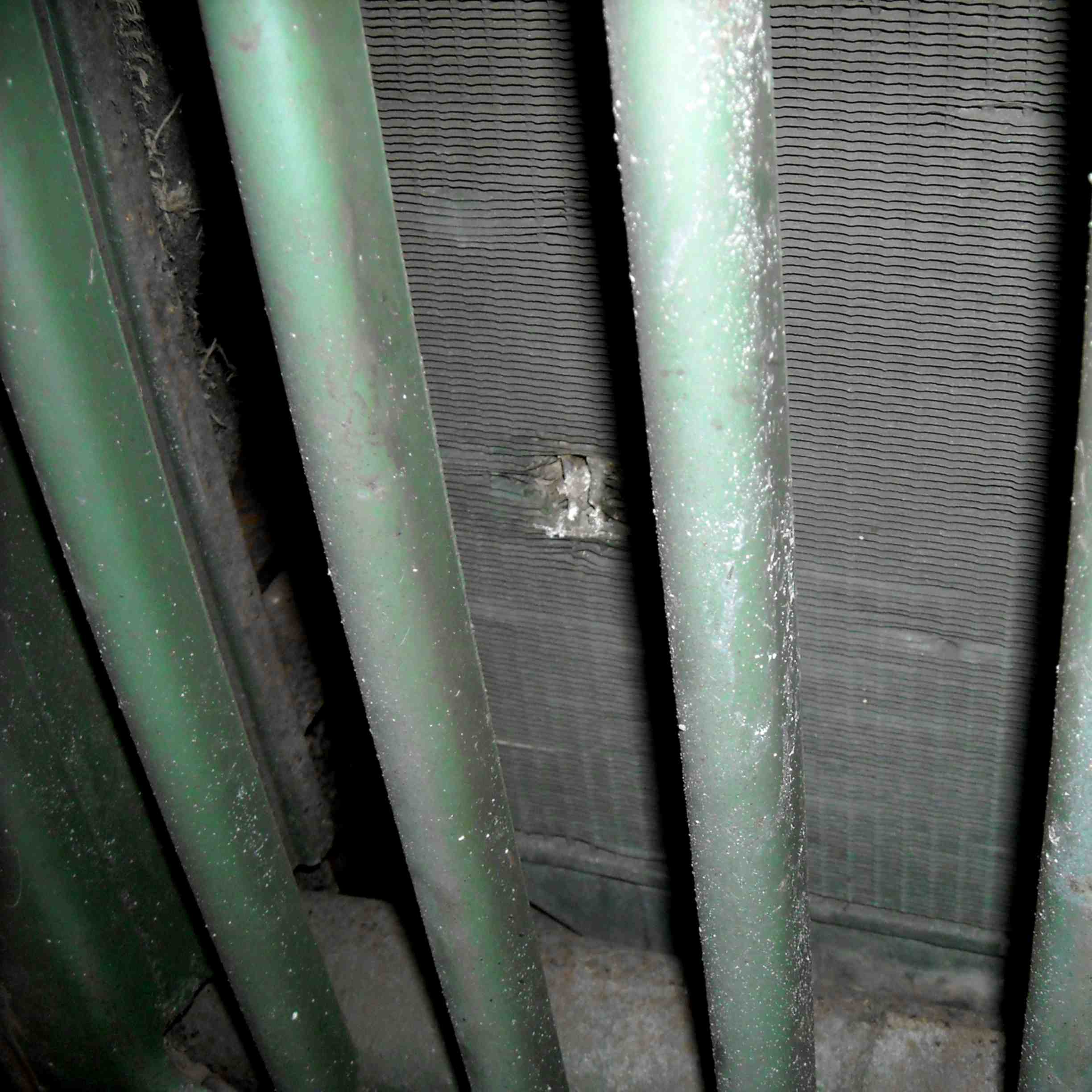
Radiators are designed to allow thermal transfer occur between coolant heated from the engine, and cool air coming in to the engine bay through the grille. Oil coolers have a similar design and location, but tend to be smaller, and are only connected to the bottom of the engine.
Radiators
In this video, Jeff Wong explains how to check your radiator fluid level. This ExpertVillage video was produced by Joshua Kidwell, and uploaded on December 12th, 2007.
The area where air passes through the radiator is made up of many tiny metal openings which collectively create a very large surface area, which is the best way to get the most out of the limited space under the hood and limited grille size.

If the radiator or grille is too small or gets clogged, it will be less effective at cooling the engine, and this could lead to overheating issues. Pictured above is a radiator with damage that limits its effectiveness.
Extra Components
Some radiators include other cooling components for different fluids, such as oil or transmission fluid.
The Radiator Cap
Radiator caps allow the radiator to be opened up so coolant can be poured directly in. It also often serves as a valve that allows excess fluid to drain into the coolant tank, and back into the cooling system when it needs more coolant. Because of its dual function, it may need replacing every few years.
Articles Related to Radiators
- Air Charge Temperature Sensor (ACT)
- Air Filter
- Antifreeze
- Belt Tensioner
- Camshaft Position Sensor (CMP)
- Catalytic Converter (Cat)
- Coolant
- Coolant Lines
- Coolant Temperature Sensor (CTS)
- Crankshaft (Crank)
- Crankshaft Position Sensor (CKP)
- Crankshaft Pulley (Crank Pulley)
- Cylinder Head
- Diesel Particulate Filter (DPF)
- Direct Injection
- Distributor
- Distributor Cap (Cap)
- Distributor Rotor Button (Rotor)
- Drive by Wire (DbW)
- Engine Block
- Engine Mount
- Engine Trim
- Flywheel
- Forced Induction
- Glow Plugs
- Heat Exchanger
- Idle Air Control Valve (IAC)
- Intake
- Intake Air Temperature (IAT)
- Intake Manifold
- Intercooler (IC)
- Knock Sensor (KS)
- Manifold Absolute Pressure Sensor (MAP)
- Manifold Air Temperature Sensor (MAT)
- Mass Air Flow Sensor (MAF)
- Moisture/Humidity Sensor
- Muffler
- Oxygen Sensor (O2 Sensor)
- Piston Rod
- Pistons
- Positive Crankcase Ventilation Valve (PCV)
- Pushrods
- Resonator
- Rocker Arm
- Serpentine Belt
- Spark Plugs
- Starter
- Supercharger (Blower)
- Swirl Control Valve (SCV)
- Thermostat
- Tuned Port Injection (TPI)
- Turbo Flutter
- Turbo Lag
- Turbocharger (Turbo)
- Valve Cover
- Valve Lifters
- Valves
- Water Pump
